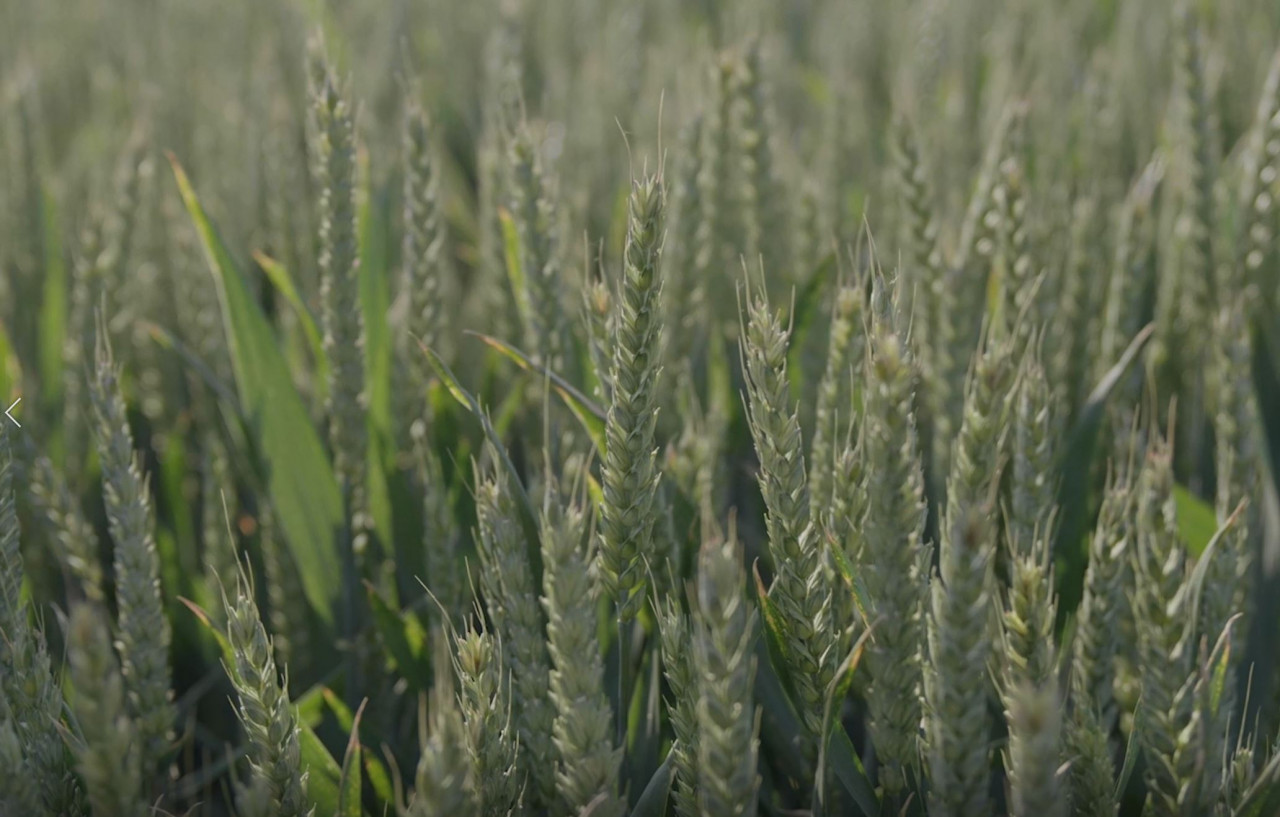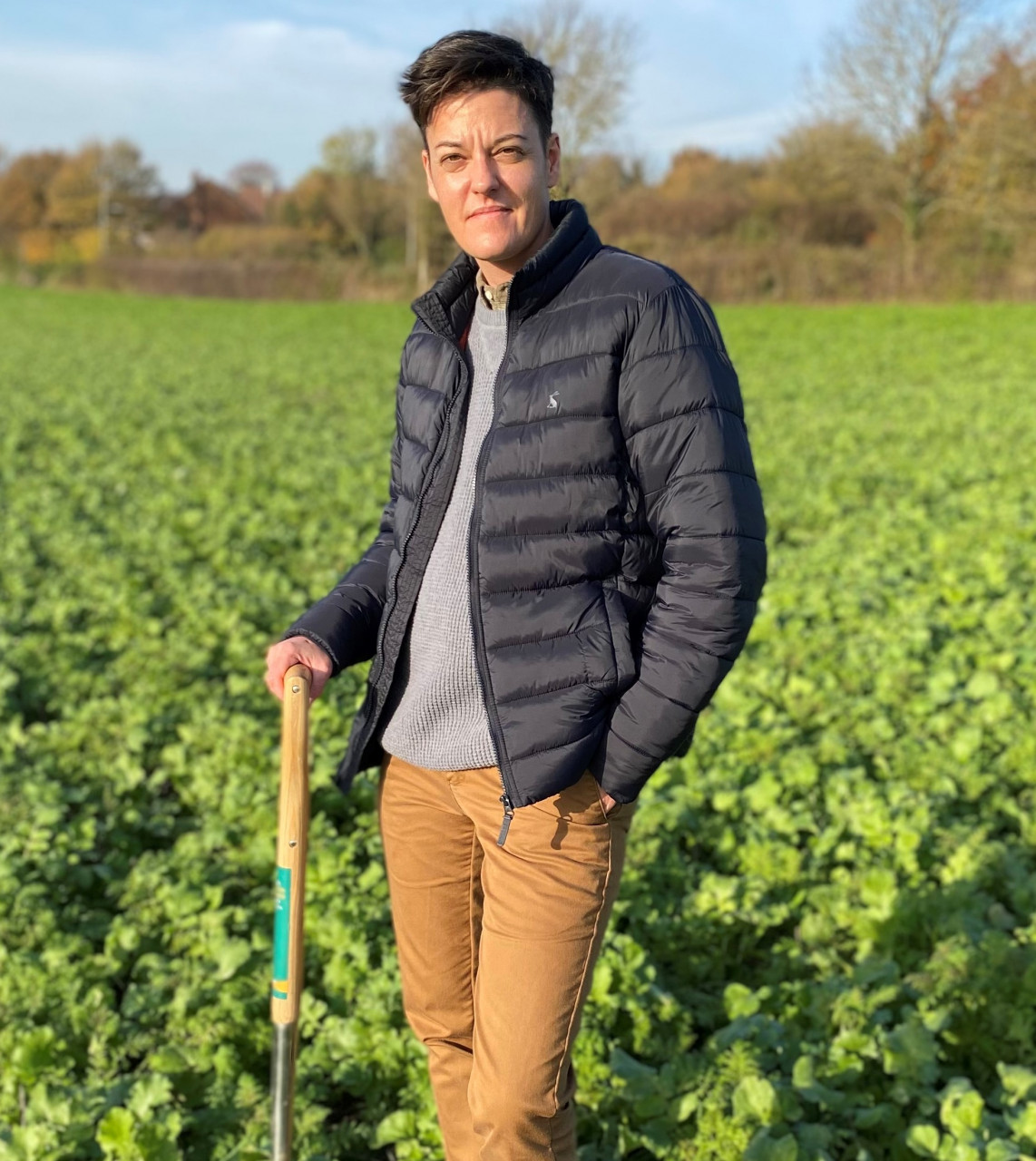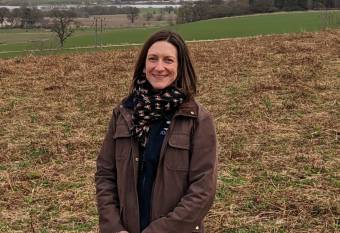Sustainability in Practice: Farming for a better future
CPM has partnered with Frontier Agriculture to produce a 'Sustainability in Practice' article series. This blog article was originally published in the April issue of CPM as the first instalment, with two more features to follow. You can read the original article across pages 67-69 in the online CPM April issue here.
What comes first profitability or sustainability? For years, there has been no doubt for most businesses; from the smallest to the largest, the balance between the two has been tilted very much towards profitability.
More recently, driven by the climate crisis, political change and mounting evidence of biodiversity loss, sustainability has pushed its way up the agenda and into the public's conscience.
To be truly sustainable a business must be profitable. While most people would agree that creating a farm business model that is both sustainable and profitable is the ultimate goal, putting this into practice can be complex, notes Jim Stotzka, lead on sustainability for Frontier Agriculture.
"Profitability is clearly part of sustainability. If a business isn't commercially viable, it won't exist as a business in the future. Being affluent and stable in a commercial sense makes it easier to take action and drive sustainability improvements –– otherwise it's very hard to make a proactive difference," he says.
But 'how' businesses go about making a profit is now equally important, says Sarah Burgess, Frontier's sustainability manager. "It's about the way we do business, live our lives, and work with each other. It's about being responsible to make sure what we're doing now doesn't have a negative impact in five, 10- or 20-years' time."
Opportunities ahead
Expanding beyond a profit and growth-driven approach to measuring business success is far from easy, she admits. "Political and economic uncertainty and change creates a bias towards businesses focusing on short-term issues.
"Looking instead for opportunities that deliver both business growth and sustainability improvements is key. It's by no means an overnight change, but in the past few decades the transition has become much more visible."
With large organisations now investing more into sustainability, the impact is starting to filter down to smaller businesses, including farms, says Sarah. "The most interesting conversations we're now having are around what grain consumer and food production businesses need and exploring how those needs might translate into supply chain opportunities on farm."
For some farm businesses there can be an air of uncertainty when it comes to the motives of larger agrifood businesses, she admits. "There can be apprehension and resistance to change, particularly when new requirements are introduced, which is understandable.
"The prospect of supply chain mandates is something many quite rightly want to avoid. It's about having open conversations about the opportunities within farming instead.
"Frontier uses a more collaborative approach, working with farmers to understand what's possible and what's right for the individual farm business."
Productivity is central to that approach, stresses Jim. "We have a uniquely favourable landscape and climate to produce good quality, high yielding crops. It's no coincidence that the UK is able to produce world record yields.
"But we're not just managing land for crops. We're looking at better utilisation which delivers 'public goods', including biodiversity, carbon, water and soil health, so it's not quite so simple anymore."
Add in the impact of Brexit changing trading relationships with the European Union and international markets in general; a brand-new government policy agenda, changes in consumer demands and perceptions in the role of agriculture, and climate change impacts, it adds up to a huge transition.
Navigating through it requires careful thought and planning, says Jim. "The complexity can be daunting, but a starting point could be taking stock of what's happening on the farm today. Begin considering what you could be doing differently and what you want to achieve."
That could include some basic actions to improve soil health, such as improving drainage, changing tillage systems, or using cover crops effectively, he suggests. But it could also include scenario-planning for changes in crop rotations, development of new practices such as investing in irrigation, and even changing the farming system completely or exploring diversification.
"Some of those might involve substantial costs or changes in infrastructure, so won't be for everyone," he adds. Being aware of all the potential funding streams available to support a transition to a sustainable system –– particularly as the Basic Payment Scheme ends – is going to be crucial too, comments Sarah.
Funding streams
"I would implore any farmer looking at their business as it is now to make sure they're aware of all the funding streams that could also help with their profit and loss accounts. These could be public, private or through the supply chain and may only require slight changes to existing farm management to meet the payment criteria."
Government funding will be split into three pots under the Environmental Land Management scheme. The cornerstone for most growers will be the Sustainable Farming Incentive (SFI), explains Fiona Tweedie, sustainable farming adviser for Frontier's specialist crops and environmental division, Kings Crops.
"SFI provides payments for implementing certain changes across the farm. In some cases, the change may only be slight, but the Government is keen to fund the actions to deliver its targets, such as those in the 25-Year Environment Plan," she says.
"The actions in SFI are designed to work with crop production, hence cover and companion cropping options. There are also payments for establishing crops with zero-till and using precision farming approaches, which more growers are looking to adopt.
"New standards expected to come out later this summer include actions that will be familiar to those already in agri-environment schemes, such as growing winter bird food, pollen and nectar plots, taking field corners out of management and adding buffering features like hedges," says Fiona. "Although these can mean taking some areas out of production, they are an opportunity to generate payments on marginal land."
There's also government funding available through efficiency and productivity grants, such as the Farming Equipment and Technology Fund (FETF) and Farming Transformation Funds (FTF).
These are currently only open for defined periods and for select capital items. Both are competitive so it's not guaranteed funding. FETF is for smaller value items, up to £25,000, while FTF is for larger scale capital items.
Examples of equipment for which funding is potentially available include robotic weeding and spraying equipment or switching to a more efficient water application –– such as trickle or boom irrigation rather than rain guns –– or building a new reservoir to move away from summer abstraction in FTF.
In FETF, grants have been available for direct drills, inter-row companion drills, grain store equipment and retro-fitted yield monitoring. "There's been something for almost every farm I've been to recently," says Fiona.
Using such funds to improve productivity could also help decrease greenhouse emissions, she adds. "The more efficient your production, the less leakage there is in terms of greenhouse gas emissions because you're optimising every input to work as hard as possible and avoid waste."
Equally important in the future could be private sources of funding. One such source is coming through changes to planning policy, says Fiona, with the introduction of compulsory biodiversity net gain (BNG) and nutrient neutrality mitigation for developers.
BNG requires developers to offset the effect on biodiversity of a new housing, commercial or industrial development, while nutrient neutrality seeks to mitigate the increased levels of phosphate and nitrogen brought by developments.
There is the opportunity to stack these credits on the same piece of land, provided the eligibility criteria for each market is met.
"Unfortunately, the greatest biodiversity credit uplift comes from taking some arable land out of production and turning it into a different habitat, like species-rich grassland," she says. "For nutrient neutrality, most deals currently focus on wetland creation or managing fallow areas."
However, Fiona suggests that farmer collaboration on these deals can be a good approach. "Most farms will have some underperforming areas and, while they may not be particularly sizeable overall, by collaborating with neighbouring farms a larger bank of land could be offered to a developer on which they could offset their biodiversity net gain or nutrient neutrality requirements.
"It's not one farmer taking 10ha out of production, but could be 10 farmers each contributing 1ha, for instance."
Other private funders include those within the supply chain or water companies keen to work with farmers to help deliver their own sustainability targets.
Some supply chains have recognised that growers can't take on the risk of change alone and are providing support through payments for practices. These commonly include growing cover crops to reduce nutrient runoff and soil erosion or growing headland biodiversity mixes as part of a wider integrated pest management strategy.
Supplier collaboration
Collaborating with suppliers to make sure such schemes work for both parties is important to stop the supply chain handing out mandates, stresses Fiona. "Farmers are interested in measures like integrated pest management and are willing to try things, especially if some of the risk has been removed or subsidised, or there's advice available to help them."
Another possible revenue stream is the emerging carbon markets for sequestration, but the Frontier team advises caution. "Soil carbon is notoriously difficult to quantify and changes dynamically because it's a natural system," says Sarah.
"There can be a huge amount of risk –– the processes aren't always robust enough to pay for something or for the buyer to know that payment is actually going to make a difference."
It's worth measuring soil carbon stocks on farm, however, suggests Jim. "In reality, this isn't going to go away and there's a lot of money being put into developing a carbon code. It's a good idea to benchmark now to understand what's there for when we do have a clearer view of whether the schemes are solid."
The benefits of carbon schemes are constantly being monitored by Frontier, he stresses. "We're also piloting building our own natural capital marketplace that will connect consumer funding and growers."
Data management is likely to be a key requirement in that, and most other schemes, he adds. "All schemes that farmers get paid for will likely have an element of data exchange."
Sarah acknowledges that might worry some farmers. "Our advice is to think about what data you can share, and the benefits and financial opportunities that sharing it with the supply chain can offer your farming business.
"We believe there are benefits for the whole supply chain if we all share data, which is sometimes even anonymised. If we want to drive improvements in supply chains, we will all have to be more open to working in a collaborative manner than in the past, which involves sharing data."
Regenerative system attracts multiple funding
Access to funding is crucial in helping Nonington Farms continue with its journey towards what it views as a more sustainable production system.
The 1250ha farm, which includes 160ha owned land plus contract farming agreements for five other landowners in Kent, switched from a high input, high output system to a regenerative approach using minimal tillage, reduced inputs, cover crops and livestock in the arable rotation in 2017.
The result has been an average £189/ha saving in pesticide and fertiliser inputs, while yields have remained on a par with the higher input approach, explains Hugo Dwerryhouse, assistant farm manager for Nonington Farms.
"We're producing 10t/ha milling wheat using about 180kgN/ha. Helped by Frontier, we've found two sustainable contracts that offer a premium while asking for 12.5% protein."
The farm uses multiple sources of funding to help with activities across the farm. Private funding from Southern Water is used to plant herbal leys and over winter cover crops, says Hugo. It also pays for the farm to variably apply nitrogen and conduct N-min sampling, both of which have been valuable in reducing overall applied nitrogen.
"It shows they want us to farm in a sustainable way and be proactive in reducing our inputs."
Government funding is also pushing farms in that direction, he suggests. "Offering an SFI payment for no insecticide use, IPM plans, and companion cropping is showing a clear picture for where it wants us to be in 10 years."
Hugo thinks by stacking private and SFI options – such as intermediate arable soil standard, companion cropping and zero insecticide – plus a grazing fee for grazing both cover and cash crops, the farm should be able to get close to replacing BPS income.
Biodiversity payments are another area he thinks could open up in the future. "I think eventually we could be paid for how many skylarks or yellowhammers we have," he concludes.
Through our close customer relationships with farmers and grain consumers, at Frontier we can provide expert advice, services and solutions across all aspects of sustainable crop production, from seed in the ground to grain in the store.
Our specialist advisors support UK farmers across seven key areas essential to productivity and longevity, offering flexible, tailored and practical approaches that suit the needs of individual farm businesses. Learn more at www.frontierag.co.uk/sustainable-crop-production
As a subscriber, you’ll receive email alerts each time a new blog is published so you can always stay updated with the latest advice and insights from our experts










Comments